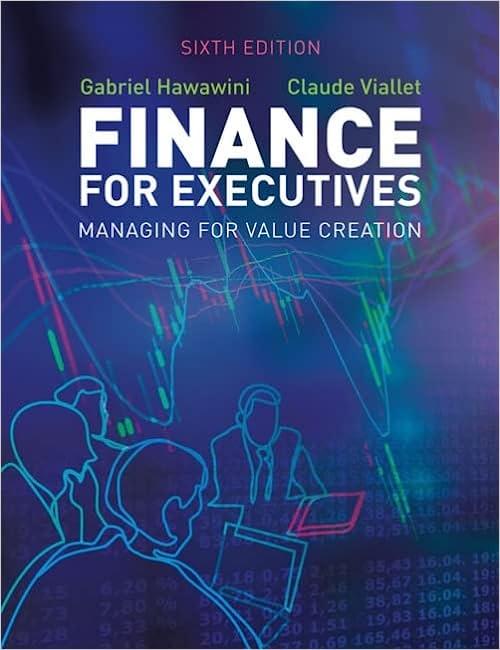Question
Cha-Co-Go Ltd is a listed company on the ASX, in which the majority of shareholders are resident overseas and are unable to utilise Australian imputation
Cha-Co-Go Ltd is a listed company on the ASX, in which the majority of shareholders are resident overseas and are unable to utilise Australian imputation credits. The company has done some preliminary evaluation of an investment project on a new production line for a juice maker. This bubble tea maker will cost $8 million with an expected rate of return of 12%. On the balance sheet as at 30 June 2017 for the company shows: Long-term debt: value at $1,500,000 with 5 years to maturity that were issued with a par value of $100 each, paying annual coupon amounts of 16.35%. The current interest rate for 5-year bonds of similar risk is 8% pa. Bonds: par $105, quarterly coupon 7.25%, 8 years to maturity with a current market price of $110.88 and a balance sheet value of $500,000. Preference shares: 55,000 issued shares paying a $0.94 dividends and currently selling for $9.09 per share. Debentures: par $56, semi-annually coupon 8%, 6 years maturity with a current market price of $70 and a balance sheet value of $332,000. Ordinary shares: 825,000 shares on issue selling for $3.03 per share. The company expects to pay a future dividend of $0.16 per share, and the dividends have been increasing at an annual rate of 9% pa. (Very) Ordinary shares: par value of $1.5, with a total value of $750 000 Forecasts in relation to market returns for only the (very) ordinary shares are as follows: expected risk-free rate of return = 3% per annum expected return on the market portfolio = 10% per annum Cha-Co-Go Ltd has a beta of 0.75 These shares are trading on the market at $1.63 each. The company tax rate is 30% (use this tax rate for all parts of this question). (a) Determine the market value proportions of long term debt, bonds, preference shares, debentures, ordinary shares and (very) ordinary shares comprising the companys capital structure. (b) Calculate the after-tax costs of finance for each source of finance. (c) Determine the after-tax weighted average cost of finance for the company. (d) Briefly explain why market values are used to calculate the weighted average cost of capital, hence determine if the investment should be made.
Step by Step Solution
There are 3 Steps involved in it
Step: 1

Get Instant Access to Expert-Tailored Solutions
See step-by-step solutions with expert insights and AI powered tools for academic success
Step: 2

Step: 3

Ace Your Homework with AI
Get the answers you need in no time with our AI-driven, step-by-step assistance
Get Started


